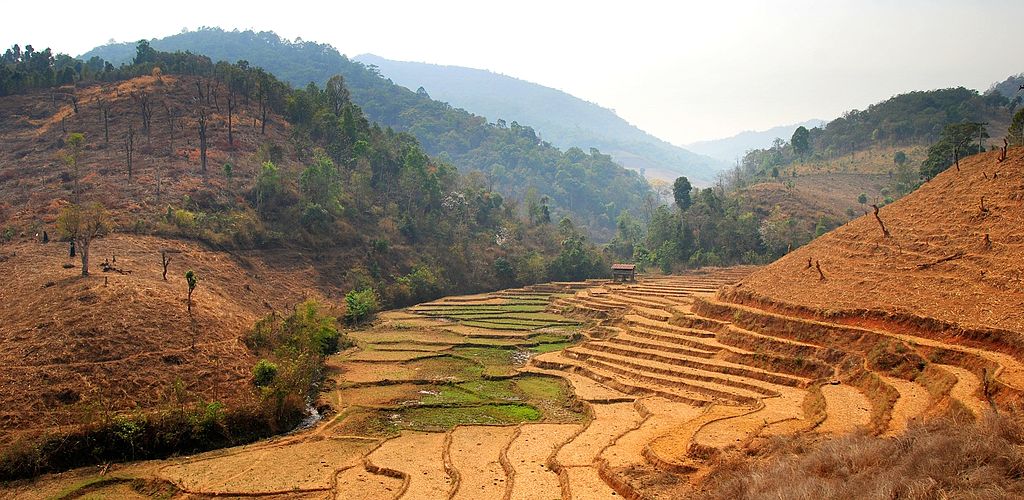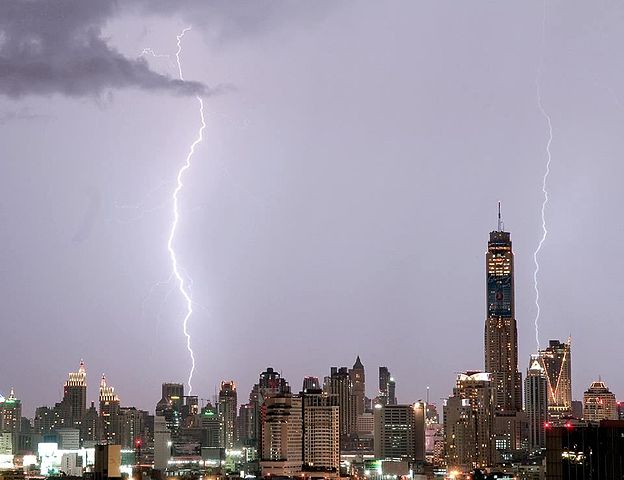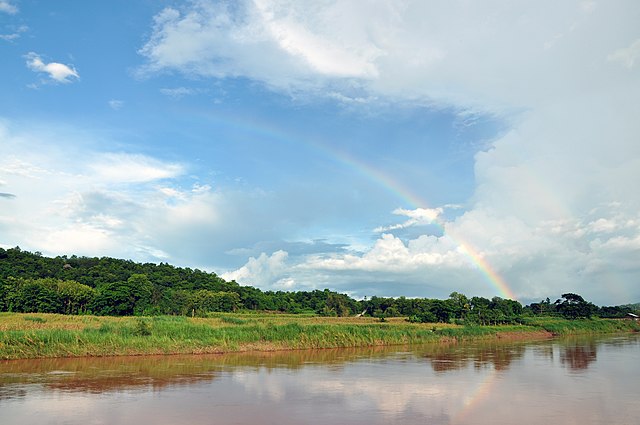
The Thammasat University Libraries have newly acquired a book about climate change, one of the serious issues affecting the world today. Economic Risks of Climate Change is edited by Drs. Trevor Houser, Solomon Hsiang, Robert Kopp, and Kate Larsen. The book required four editors because it deals with complex international energy and environmental policy issues. Understanding energy and natural resources practice is difficult, and trying to predict what may happen in the near future is also challenging. The co-editors proceeded with an evidence-based approach to see what costs and benefits would occur with climate change, and how forests, tourism, and national security would be affected. Economic Risks of Climate Change focuses on how the economy of the United States will react to increased flooding and storm damage, different agricultural productivity, and other situations. While many researchers try to understand these changes, a precise way of measuring such results has not been available previously. To arrive at this precision, in 2013 the Risky Business Project was founded. Among the results published for the United States of America include:
- By the middle of this century, the average American will likely see 27 to 50 days over 95°F each year—two to more than three times the average annual number of 95°F days we’ve seen over the past 30 years. By the end of this century, this number will likely reach 45 to 96 days over 95°F each year on average.
- As extreme heat spreads across the middle of the country by the end of the century, some states in the Southeast, lower Great Plains, and Midwest risk up to a 50% to 70% loss in average annual crop yields (corn, soy, cotton, and wheat), absent agricultural adaptation.
- Summer average temperatures in Minnesota, Wisconsin, and Ohio are expected to be hotter by century’s end than average summer temperatures in Washington, D.C., today.
- Over the next 5-25 years, without significant adaptation by farmers, some counties in Missouri, Illinois, and Indiana will likely see average commodity crop losses up to 18 to 24% due extreme heat each year.
- Electricity demand will grow as households and businesses increase their use of air conditioning in response to temperature increases throughout the region. The Midwest in particular will see large energy cost increases due to expenditures associated with switching from heating demand to cooling demand. For instance, the most southern Midwest state of Missouri will likely see a 4% to 16% jump in energy costs by mid-century, with a 1-in-20 chance this jump will be more than 20% by mid-century.

A climate risk assessment published in 2014 stated:
The U.S.A. faces significant and diverse economic risks from climate change. The signature effects of human-induced climate change — rising seas, increased damage from storm surge, more frequent bouts of extreme heat — all have specific, measurable impacts on our nation’s current assets and ongoing economic activity… Our findings show that, if we continue on our current path, many regions of the U.S.A. face the prospect of serious economic effects from climate change. However, if we choose a different path—if we act aggressively to both adapt to the changing climate and to mitigate future impacts by reducing carbon emissions—we can significantly reduce our exposure to the worst economic risks from climate change, and also demonstrate global leadership on climate.
It is generally accepted that weather and climate shape every nation’s economy, determining how much energy is used for air conditioning, for example, just as rain levels affects levels of available drinking water. The wider influence on the agriculture, recreation, and tourism industries requires further study. The American economy is also dependent on tourism, which in turn depends on an appealing climate that does not discourage visitors because of extreme weather events. Most responsible observers agree that future problems may be avoided in part by lowering global greenhouse-gas (GHG) emissions, defensive investments, and behavioral adaptation. Even if this happens, some changes in climate will occur and governments as well as citizens would be better off if they prepared for them.
Thailand and Climate Change
In January, a study by the Asian Development Bank (ADB) declared that the ASEAN community will be at risk if nothing is done to counteract climate change.
Economic losses under the “business-as-usual” emissions scenario could be 60 per cent higher than previously estimated, and this could reduce the region’s gross domestic product by up to 11 per cent a year by 2100, the ADB said. The warning is in an analysis updating a 2009 report that estimated a 7-per-cent annual reduction in combined economic output due to climate change.
ADB chief economist Shang-Jin Wei explained:
The economic costs of not reining in greenhouse-gas emissions are more serious than we previously estimated. At the same time, this new study also shows that reducing emissions and stabilizing the climate will produce benefits and avoid losses for Southeast Asia, which in the long run sharply outweigh the costs of action.
Thailand, Indonesia, Malaysia, Philippines, and Vietnam produce 90 per cent of ASEAN greenhouse-gas emissions, as the most heavily industrialized nations in the region. While ASEAN carbon emissions are 7.4 per cent of the world’s total amount, they have been steadily growing by five percent annually over the past 20 years. Deforestation and land use create the problem, and energy efficiency remains to be widely adopted. The ADB recommends reducing land-use emissions, increasing energy use efficiency, and replacing carbon-intensive fuels with cleaner choices. Just by avoiding deforestation, especially in countries such as Indonesia and Malaysia where forests remain, could make a significant difference. One result would be lower carbon prices, benefiting the ASEAN region.
In 2015, the European Union Heads of Mission in Thailand signed a public letter on the occasion of EU Climate Diplomacy Day, as printed in The Nation. It declared:
We congratulate Thailand for showing leadership by announcing at last year’s 20th edition of the conference that Thailand intended to reduce its emission intensity by 7 per cent from 2005 levels through domestic actions, and up to 20 per cent with international assistance. This makes Thailand the 4th country in Southeast Asia to make a voluntary pledge to reduce greenhouse gas emissions. We now look forward to Thailand demonstrating a strong commitment on climate change by announcing an ambitious Intended Nationally Determined Contribution as soon as possible before the Paris Conference. We also hope that Thailand will do all it can to advocate for ambitious climate action across the region, ahead of Paris and beyond. The EU and many of its member states are pleased to be working with Thailand on climate change. We look forward to continuing to do so in the future.
As part of raising awareness, Thai universities are including classes on climate change to inform students. At Kasetsart University and Chiang Mai University, undergraduates take general education courses on climate change. The School of Global Studies, Thammasat University, has produced Coastal Cities at Risk: Health and Climate Change Adaptation City resilience Simulator Development (Phase I), a descriptive study of secondary health information system and demographic indicators on public health services, public health emergency system resources and vulnerable groups in terms of health in flood-affected populations. The TU Libraries own a number of books on climate change in general and its effect on Thailand’s economy in particular, including some forecasts into the next decades.

(All images courtesy of Wikimedia Commons).

